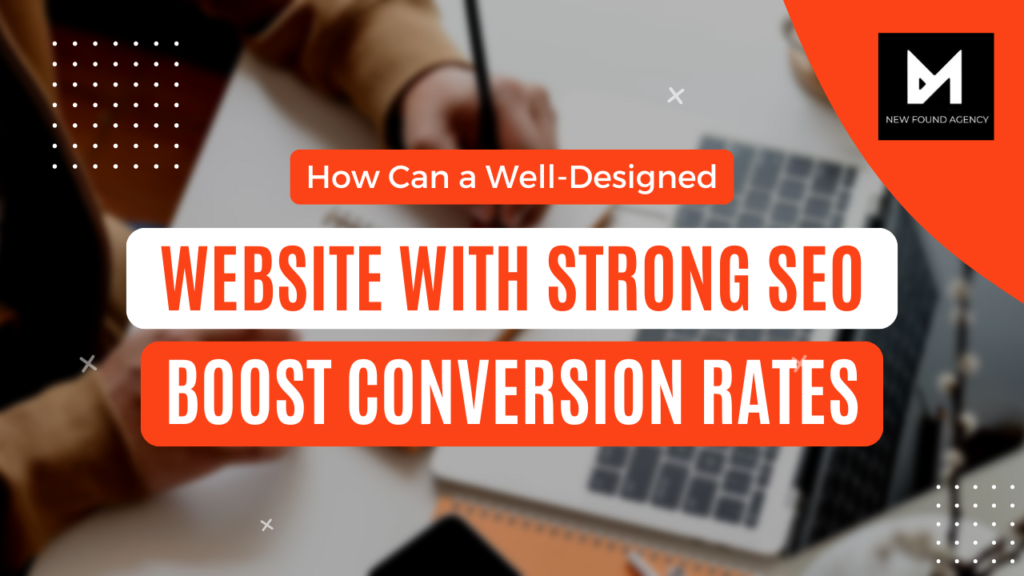In the digital age, your website serves as the front door to your business. It’s often the first interaction potential customers have with your brand, making it critical for your site not only to look good but also to be optimized for search engines. A well-designed website combined with strong Search Engine Optimization (SEO) can significantly boost your conversion rates. Here’s how these elements work together to enhance your online presence and effectiveness.
The Role of Web Design in Enhancing User Experience
A well-thought-out and executed web design ensures that your website is not just attractive but also user-friendly. Here are key factors that influence how design impacts user experience and conversions:
- Simple Navigation: Easy and intuitive navigation ensures visitors can find what they are looking for without frustration. This is crucial because a positive user experience encourages visitors to stay longer and explore more of your site, increasing the likelihood of conversion.
- Responsive Design: With the increasing use of mobile devices to access the web, your site must perform well on all screen sizes. A responsive design adapts to different devices, providing a seamless experience whether on a desktop, tablet, or smartphone.
- Speed and Load Time: Websites that load quickly lead to a better user experience. Slow websites can drive visitors away, reducing the chances of conversion. Optimizing image sizes, utilizing caching, and minimizing code can help improve your site’s loading speed.
- Aesthetic Appeal: An appealing website can make your business look professional and trustworthy. Good use of colors, fonts, and layout can not only attract visitors but also keep them engaged.
Integrating SEO to Drive Traffic
SEO is the practice of optimizing your website to rank higher in search engine results. This is essential because higher visibility in search results drives more traffic to your site. Here’s how SEO contributes to increasing conversions:
- Keyword Optimization: Incorporating relevant keywords into your content, especially those that potential customers are searching for, can help improve your visibility on search engines. However, it’s important to use them naturally to ensure the content remains engaging and valuable.
- Quality Content: Search engines favor websites that provide valuable and unique content. Regularly updating your website with high-quality, relevant articles or blog posts can boost your SEO efforts, driving more organic traffic and thereby enhancing opportunities for conversion.
- Meta Descriptions and Title Tags: These elements provide a brief overview of what each page on your website is about. When well-crafted, they can improve your click-through rates from search engine results pages, bringing more targeted traffic to your website.
- Backlinking: Acquiring links from reputable sites not only boosts your site’s authority but also drives traffic. Search engines view backlinks as a vote of confidence, which can improve your site’s ranking and visibility.
Conversion Optimization Techniques
Once you have traffic coming to your site through effective SEO and a compelling design, the next step is to convert these visitors into customers. Here are strategies to improve your website’s conversion rates:
- Call-to-Action (CTA) Buttons: Clearly visible and compelling CTAs can guide visitors towards taking the action you want, whether it’s signing up for a newsletter, scheduling a consultation, or making a purchase. The placement, size, color, and text of your CTA buttons can significantly affect their effectiveness.
- Landing Pages: Well-designed landing pages can be very effective in converting visitors into leads or customers. These pages should be aligned with specific keywords or ad campaigns and contain clear, concise messaging and a strong CTA.
- Trust Signals: Including testimonials, certifications, and guarantees can help build trust with your visitors. People are more likely to convert when they see that others have had positive experiences with your brand or that you back your product with a satisfaction guarantee.
- A/B Testing: Regularly testing different elements of your website can help you understand what works best for your audience. For example, you might test two versions of a page with different images or headlines to see which one performs better in terms of conversions.
Measuring Success and Making Adjustments
To ensure that your efforts in web design and SEO are effectively contributing to your conversion rates, you need to track and analyze your performance. Tools like Google Analytics provide insights into your website’s traffic, user behavior, and conversion metrics. Monitoring these metrics allows you to see what’s working and what isn’t and make necessary adjustments.
- Traffic Sources: Understanding where your traffic is coming from can help you refine your SEO strategies and allocate your marketing budget more effectively.
- Bounce Rates: High bounce rates might indicate that your pages are not relevant to the visitors or that the user experience is lacking.
- Conversion Rates: Tracking how many visitors take the desired action on your site can help you gauge the effectiveness of your design and optimization efforts.
Conclusion
Combining a well-designed website with robust SEO practices is key to not just attracting visitors but converting them into customers. By focusing on user experience, optimizing for search engines, and continually measuring and refining your strategies, you can enhance your website’s effectiveness as a powerful tool for business growth. With consistent effort and strategic adjustments, your website will not only rank well but also deliver the conversions you need to succeed.

